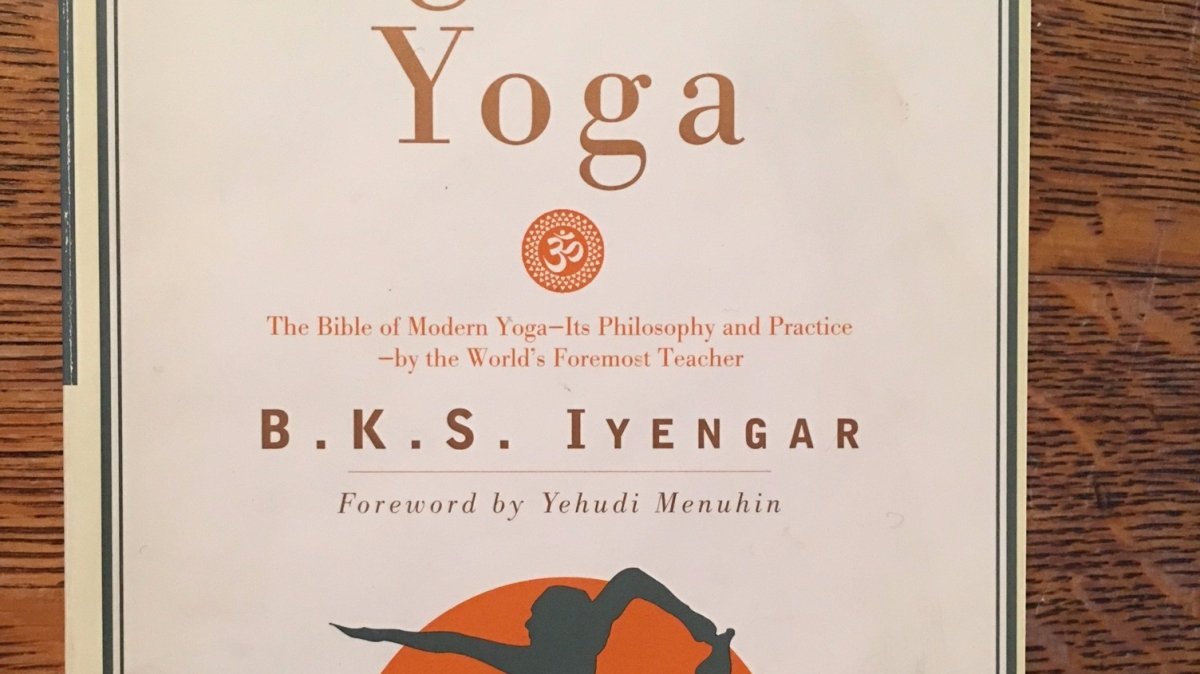Right away I had to look up a word, and it wasn’t even Sanskrit:
aphorism: saying, maxim, adage, proberb; a pithy observation that contains a general truth.
There are lots of jewels just in Iyengar’s introduction. I learned tidbits such as the philosophy of yoga was “collated, coordinated and systemized” by Pantajali in his work Yoga Sutras. I learned that yoga is discussed in the Bhagavad Gita. And I loved the hopefulness in Iyengar’s belief that when the mind is controlled and calmed by yoga practice, a person can find eternal joy and the true reality underlying material things.
I yengar mentions Karma Yoga, yoga of doing right action and moderation in all things.
He writes that Pantajali described mind as having three parts—the decision-making, mind of attention that we usually think of as mind, the reason and the ego.
The stages of yoga are: Yama (morals), Niyama (discipline), Pranayama (control of the breath), Pratyahara (control of the senses), Dharana (concentration), Dhyana (meditation) and Samadhi (super-consciousness, joy, fulfillment). The yoga asanas are part of Yama and Niyama.
I love the section in the introduction about various types of people and the types of yoga that might suit them. For the active person, Karma Yoga. For the emotional person, Bhakti Yoga, a form where one searches for a personal god, is suitable. Jnana Yoga is great for the intellectual who wants to study yoga. Yoga Marga is for a reflective, meditation-oriented type.
Raja Yoga is a mastery of the Self. Pantajali calls it Ashtanga Yoga or the eight limbs of yoga. It is also known as Hatha Yoga, demanding rigorous discipline.
Chitta Vrtti means causes for modification of the mind and Iyengar lists several. The one I relate to most is Asmita, the feeling of individuality which limits a person and makes him feel not part of a group.
Chitta Viksepa (distractions and obstacles) include sickness, languor, doubt, indifference, laziness, sensuality, illusions/fantasies, failure of concentration, instability of concentration. Also, Pain, despair, unsteady breathing, unsteadiness of the body.
I relate to languor, although I am seeing that when my eyes are moistened with drops I feel much more alert and able to work. Also, the summer heat has made me feel enervated and in winter sometimes the extreme cold sends me back under the covers. I also relate to over-valuing sensual things (Avirati) but like the fact that if the mind is controlled, even a yogi can enjoy sensual pleasures but not get wrapped up or obsessed by them.
To overcome obstacles, Pantajali says we must work on friendliness, compassion, delight and disregard. Disregard meaning not buying into people who are behaving badly but also searching oneself for how we might have behaved under the same circumstances. So there is no “better than,” just consideration and rejection of bad behavior and attitudes.
Constant practice is the secret of success. Like Malcolm Gladwell’s Outliers (coming later to the Selfish Book Club!), the 10,000 hours applies to yoga as it does to anything else. Practice, practice, practice.
More take-away wisdom: Ahimsa means non-violence; Satya means truth; Asteya means non-stealing, but even more than that, non-craving; Brahmacharya means celibacy, but most yogis enjoyed marriage in their youth and only became celibate later in life. Iyengar says it is important to experience love, celibacy can come later. Aparigrapha means not hoarding!!! As an organizing professional, I love this one.
The book continues with loads of photos of Iyengar performing yoga asanas and gives detailed descriptions of each. This is a classic yoga reference book and a definite “keep.”
